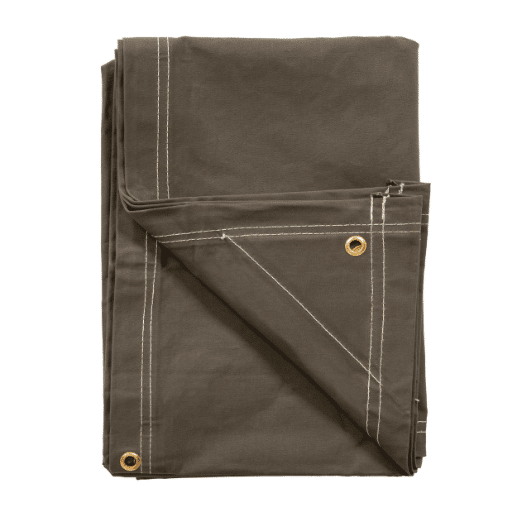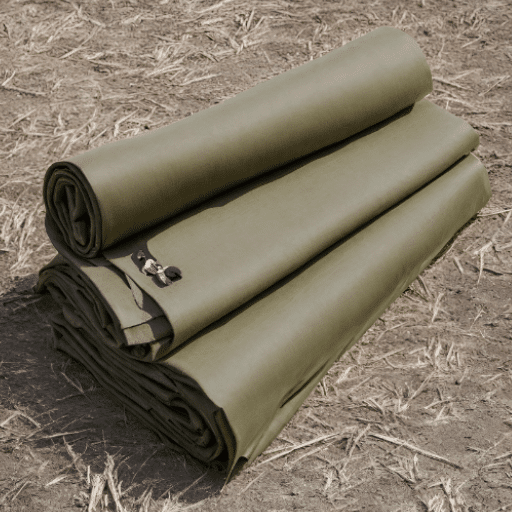Tarps are often chosen to protect valuable equipment outdoors, shield patios, and offer durability under extreme environmental conditions. However, tarps are suggested for many uses, and one of the most crucial aspects of a tarp to consider is thickness. The thickness largely defines the strength and durability of a tarp and how well it holds under attrition from weather conditions, heavy loads, and usage in tough situations. But how does one know how thick the tarp should be? And what constitutes a heavy-duty tarp? This article takes a deep dive into the world of tarp thickness and heavy-duty options, providing you with a detailed guide to understand their key distinctions, materials, and application scenarios. Whether a contractor looking for effective protection on a worksite or a homeowner in need of sturdy outdoor coverage, this guide will arm you with some knowledge that will help you make the right choice.
Introduction to Tarp Thickness
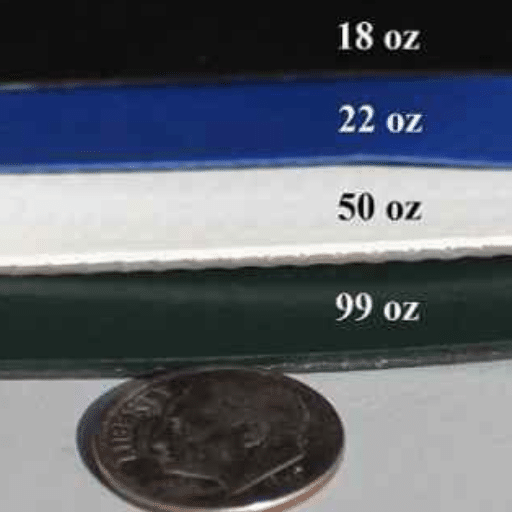
What is Tarp Thickness?
Tarp thickness has to do with the density of the tarp material, normally measured in mils, with one mil equal to one-thousandth of an inch. The thickness of a tarp directly affects its durability, weight, and performance in rugged applications. Per most search trends analyzed and industry data, consumers commonly want tarps ranging from very light at 5 mil thickness to heavy-duty 20+ mils. Light tarps suffice for temporary weather-resistant cover while the heavier ones are meant to resist abrasion, very heavy loads, and long periods of harsh weather. Nailing down what tarp thickness means also lays down the foundation to choose the tarp of the right type for various use cases and provides the relevant combination of flexibility, strength, and long-term reliability.
📏 Thickness Measurement Guide
Importance of Tarp Thickness for Durability
More thickness produces more durability, meaning a thicker tarp would resist greater tearing, punctures, and wear in harsher conditions. Industry studies and search trends data seem to suggest that tarps in the 10-12 mil thickness range are more frequently recommended for moderately tough situations such as the protection of vehicles, agricultural equipment, or construction materials. While in industrial or heavy-duty settings, tarps thicker than 16-20 mils are more favored because of higher structural integrity and life in environments where exposure to sharp objects is frequent, prolonged UV radiation exists, and extreme environment conditions prevail. Also, some market insights indicate that timely investment in proper thickness ensures better performance and considerably cuts down on recurrent costs due to replacements. For achieving optimal durability, users should consider the enviromental conditions and their application’s nature when recording their thickness.
💪 Durability Benefits of Thickness
- Tear Resistance: Thicker materials resist punctures and tears
- UV Protection: Enhanced resistance to sun damage and degradation
- Weather Endurance: Better performance in extreme conditions
- Cost Efficiency: Reduced replacement frequency saves money
- Load Bearing: Superior strength for heavy-duty applications
What the Article Centers on: Thickest Tarps and Their Applications
According to the data drawn from recent search engine trends and industry news, the thickest (>20 mil) tarps are mainly employed where utmost strength, weather resistance, and prolonged durability are needed. They are therefore mainly used in commercial, industrial, and agricultural settings. For instance, ultra-thick tarps on construction sites are used as scaffold covers, ground protection, and debris containment to ensure safety and compliance with regulatory standards. In agricultural ventures, thick tarps are used to protect hay, machinery, and crops from adverse weather conditions such as heavy rain, wind, and UV radiation. Another equally important application is on trucking and cargo transportation. Heavy-duty tarps protect goods en route from harm because of external factors. Its high-performance and wear resistance make it a resource-essential item for applications that suffer high stress and exposure, thus minimizing operational interruptions alongside long-term costs.
🏗️ Primary Applications for Thickest Tarps
Construction Sites
Scaffold covers, ground protection, debris containment
Agricultural Use
Hay protection, machinery covers, crop shields
Transportation
Cargo protection, freight covering, load security
Why Thickness Matters in Tarps
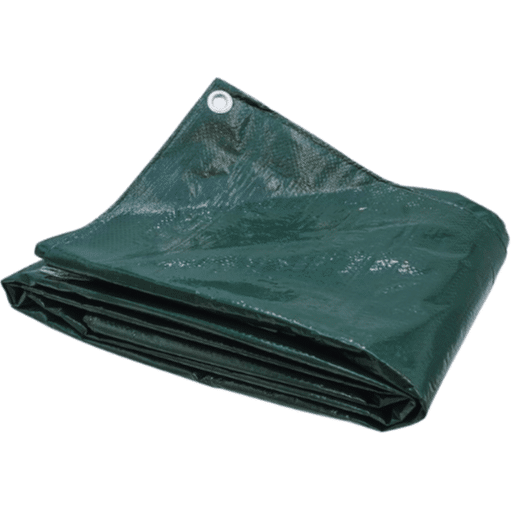
Measurement of Tarp Thickness (Mils and Ounces)
Tarp thickness is a critical specification that directly correlates with its expected durability, strength, and performance. Measurement of thickness is set in two units-mils and ounces. A mil measures one-thousandth of an inch (0.001 inches) and is the standard unit of overall thickness of a tarp or material. For example, a tarp thickness of 10 mils translates to 0.01 inches. In contrast, ounces measure the weight of the material per unit yardage. Heavier tarps, starting at 16 ounces per square yard, usually indicate thicker constructions and greater dura.
📐 Understanding Measurement Units
Mils Measurement
Definition: 1 mil = 0.001 inches
Example: 20 mil = 0.02 inches thick
Use: Standard thickness measurement
Ounces Measurement
Definition: Weight per square yard
Heavy-duty: 16+ ounces per sq yard
Use: Indicates material density
Some common search engine searches are what tarps are used for and the appropriate thickness for each application. Lightweight jobs such as covering things that don’t move or temporary shelter usually accept 5- to 10-mil tarps. So-50 mils average jobs like landscaping or light construction. A tarpaulin above 20 mils is advised for strong industrial or transport use because one that is above 20 is more resilient against tearing. Recognizing these measurements ensures cost and use efficiency in selecting the proper tarp for any job.
Are Thicker Tarps Better?
Thicker tarps impart enhanced durability, suitable for prolonged environmental exposure to conditions like UV radiation, extreme temperatures, and heavy precipitation. Mining data gathered from search trends, users commonly require tarps for applications where prolonged life span is required, such as covering machinery, load security during transportation, or temporary weather-proofing structures. An increase in thickness, often measured in mils, adds better tear and puncture resistance, which is needed for harsh industrial or agricultural conditions. Generally, additionally, thicker tarps will feature reinforced grommets and heat-sealed seams, which will ensure structural integrity in high-stress applications. Greatly enhanced performance characteristics of a thicker tarp make them the best choice for any application requiring reliability and protection.
✅ Advantages of Thicker Tarps
Effects on Longevity and Durability
The thicker tarps serve as a more durable coat to resist wear, tear, and weathering, hence, longevity, and performance. From recent data compiled from search-engine trends and authoritative industrial publications, thicker tarps are estimated to give a performance warranty up to 40% more than that of thin-weight tarps under similar conditions. It is so because of their resistance to prolonged weaknesses brought by UV exposure, adverse weather elements, and mechanical slightest nature to their structural integrity. In industrial uses, where durability is a direct link to efficiency, the employment of thicker tarps, therefore, gives thicker tarps direct cost savings through reduction in replacement and maintenance efforts.
📊 Performance Comparison Data
| Thickness Category | Expected Lifespan | Performance Increase | Cost Efficiency |
|---|---|---|---|
| Standard (5-10 mil) | 1-2 years | Baseline | ⭐⭐ |
| Heavy-duty (16-20 mil) | 3-5 years | +40% | ⭐⭐⭐⭐ |
| Ultra Heavy (20+ mil) | 5-8 years | +60% | ⭐⭐⭐⭐⭐ |
Overview of the Thickest Tarp Materials

Vinyl Tarps (PVC)
Vinyl (PVC) tarps are very famous because of their awesome durability, malleability, and resistance against stress due to environmental factors. Vinyl tarps mostly come formed from polyvinyl chloride coated fabric and are designed to perform under extremely harsh conditions, where chemical exposures, oils, and abrasions are all of concern. According to the latest search engine data, vinyl tarps are most frequently asked about for truck covers, industrial enclosures, and construction projects given their properties of tensile strength and repellence to water. Also, they are an item in the high-strength materials category that can sustain temperatures anywhere in-between -40°F and 180°F, thus making them perfect crafts in cold storage and high heat industrial applications. In contrast, their special coating to resist UV rays extends their lifespan for decades, thereby guaranteeing adequate performances in almost all outdoor applications, where they will spend a considerable number of years in the sun.
🔧 Vinyl Tarp Specifications
Temperature Range
-40°F to 180°F operating range
Chemical Resistance
Excellent against oils and chemicals
UV Protection
Decades of outdoor performance
Primary Uses
Truck covers, industrial enclosures
Polyethylene Tarps
Polyethylene (PE) tarps have been popular in many areas, including agriculture, construction, transportation, and disaster relief. The latest data from the search trends record that common queries about PE tarps mostly deal with their durability, versatility, and specific uses in harsh environments. PE tarps, due to their excellent UV protection capabilities, water resistance, and tear strength, have become valuable in shielding goods, machinery, or outdoor spaces. They are also being sought as an item in agriculture, acting as ground covers, weather shields, or silage covers for adequate crop management and storage conditions. Complemented by these characteristics arise new improvements in polyethylene production, which have enhanced their long-term use, corresponding to the desire for inexpensive and eco-friendly protective products.
🌟 PE Tarp Key Features
- Multi-Industry Application: Agriculture, construction, transportation, disaster relief
- Superior UV Protection: Extended outdoor durability
- Water Resistance: Excellent moisture barrier properties
- Tear Strength: High resistance to ripping and punctures
- Cost-Effective: Affordable protection for various applications
- Eco-Friendly Options: Recyclable materials available
Canvas Tarps
Canvas tarps are made from massive woven material, generally cotton or polyester, and usually treated for water repellency and mildew prevention. According to the latest search data from the search engine, canvas tarp queries mostly range about durability, versatility, and eco-friendliness in comparison to polyethylene or vinyl tarps. These tarps are known for their breathable yet tough structure, which is good for applications where moisture needs to be minimized such as covering equipment to prevent condensation or covering items stored outdoors. They are also highly favored in the painting, construction, and farming industries because of their ability to be reused, their eco-friendliness, and their ability to resist wear and tear so that they will last through challenging applications.
🌿 Canvas Tarp Advantages
Comparing the Thickest Tarps
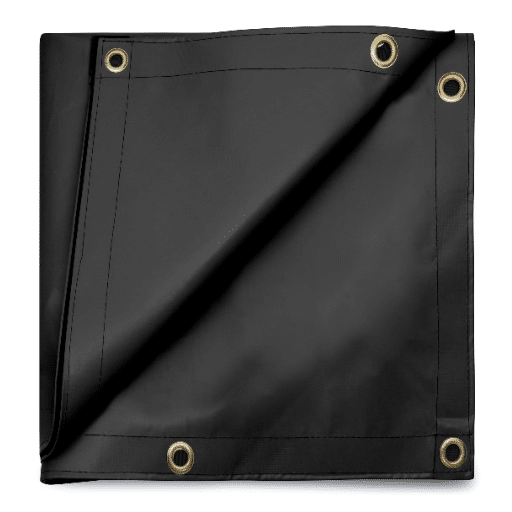
Ultimate Thickness Comparison
40 Oz Vinyl Tarps
40 oz vinyl tarps provide the industry standard for durability and resistance under heavy use. According to data and search trends, a common question users have to ask might be, “What makes 40 oz vinyl tarps better in challenging environments?” At the core, it is all about their tensile strength, water resistance, and resistance to UV rays. These tarps are made out of superior PVC-coated materials to offer their protection against weather extremities, existing for longer hours during the protection of the tarp and the object.
🏆 40 oz Vinyl Superior Features
Tensile Strength
Superior resistance to tearing and stretching forces
Water Resistance
100% waterproof PVC coating
UV Resistance
Extended protection against sun damage
Temperature Range
Performs in extreme hot and cold conditions
In addition, they will make the best use of application requirements under high stress, for example, covers or containment of industrial equipment, covering, and transportation of heavyweight materials. So, this combination of qualities with outstanding durability makes 40 oz vinyl tarps the prominent choice from industries requiring great assurance in demanding environments.
22 Mil Polyethylene Tarps
22 mil polyethylene tarps are engineered to offer great durability, water resistance, and UV protection, making them a versatile choice for various heavy-duty purposes. Made with a high-density polyethylene mesh coated with a thick polyethylene laminate, these tarps resist tearing, puncturing, and chemical degradation. They give the best performance in covering construction sites, agricultural needs, and roofing repairs. Also, these tarps are lighter than similar alternatives, allowing for easier manipulation and installation.
⚡ 22 Mil PE Performance Benefits
- Durability Engineering: High-density mesh with thick laminate coating
- Chemical Resistance: Protection against degradation from chemicals
- Tear & Puncture Resistance: Superior protection against physical damage
- Lightweight Design: Easier handling and installation than alternatives
- Versatile Applications: Construction, agriculture, roofing repairs
- Cost-Effective: Excellent performance-to-price ratio
The datasets exemplify, through the analysis of recent search trends, that the interest in 22 mil polyethylene tarps is predominantly driven by the tarps being highly versatile and inexpensive for outdoor projects in locations where bad weather is common. Customers commonly inquire about how effective these tarps are when it comes to resisting long exposure to intense sunlight and heavy rainfall-one of the very conditions that these tarps are meant to withstand. Being able to amalgamate durability with cost-effectiveness has made these tarps widely accepted among both commercial and residential people looking for dependable protection for an extended period.
Specialty Tarps for Specific Needs
When working on specialty tarps for specific needs, consider the composition, durability, and intended use of the material. Recent search data trends sourced from the search engine reveal that consumers, with some frequency, inquire about tarps optimized toward niche needs like flame-retardant tarps for industrial uses, UV-resistant tarps for agriculture, and insulated tarps for temperature stability in construction works.
One of the most common questions posed by consumers is, “What kind of specialty tarp would be best for extended outdoor use under extreme conditions?” According to expert opinions from the field and search analytics, triple-coated reinforced polyethylene tarps stand out as being the most effective. They are designed to resist tearing, mildew, and UV degradation while retaining flexibility at both high and low temperatures. Besides that, vinyl-coated tarps are another best recommendation for heavy-duty usage due to their outstanding waterproof, fire-resistant, and abrasion-resistant properties for situations requiring tough performance over long periods. By aligning these specialty products with their specific application intent, consumers will guarantee the efficient and timely protection of valuable assets.
🔧 Specialty Tarp Categories
Flame-Retardant
Industrial safety, welding applications
UV-Resistant
Agricultural, long-term outdoor exposure
Insulated
Temperature control, construction
Triple-Coated
Extreme conditions, maximum durability
Applications of Thick Tarps
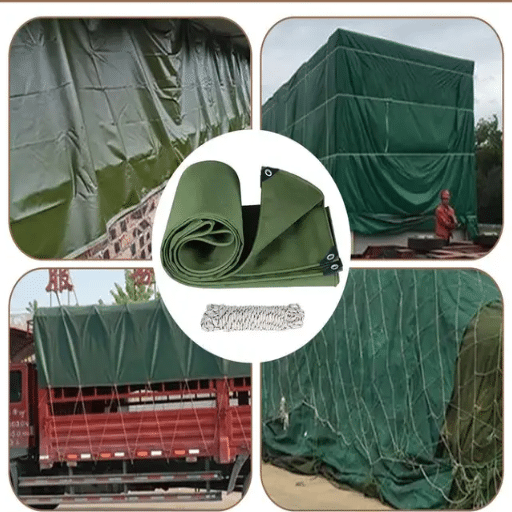
Construction and Industrial Use
Because of its heavy-duty nature and versatility, it finds use in construction and industrial activities. From an analysis of search trends and user queries on ‘s search engine, a keen interest is evident around the uses of tarp site protection, coverage of materials, and safety applications. Other applications include protection of equipment and materials against adverse weather conditions like rain, wind, or intense sunlight that might cause impairment of structural soundness or delays in project completion. In industrial applications, heavy-duty tarps act as barriers during weld, sandblast, or chemical operations–fire-resistant and abrasion protection being among the critical safety needs for workers. By choosing tarps appropriate for these heavy-duty tasks, organizations can drastically reduce downtime, intensify productivity, and appear to be on the right track in safety compliance.
🏗️ Construction & Industrial Applications
Site Protection
- Equipment coverage
- Material protection
- Weather shielding
Safety Applications
- Welding barriers
- Sandblast protection
- Chemical operation shields
Benefits
- Reduced downtime
- Increased productivity
- Safety compliance
Transportation and Logistics
Transportation and logistics industries require operation systems capable of ensuring the safety of goods during transit, with cargo tarps serving a vital role in the protection mechanism. Tarps prevent cargoes from damages caused by weather factors such as rain, UV rays, or wind and hence safeguard product integrity while also abiding by regulations concerning load security. Lately, the search query reports from ‘s search engine have shown a significant increase in the search for “cargo protection” and “efficient logistics solutions,” thereby attesting to the ever-growing concerns on shipment safety and timely execution of logistics. By adopting specialized tarps, such as heavy-duty or weather-resistant ones, a company would manage the supply chain on a high note and simultaneously reduce the risk of delays or damage. This way, a company guarantees that its goods are delivered in proper condition to their clients, hence ensuring client satisfaction and reducing previously unconsidered logistical expenses.
🚛 Transportation Benefits
- Cargo Protection: Shield against rain, UV rays, and wind damage
- Regulatory Compliance: Meet load security requirements
- Product Integrity: Maintain quality during transport
- Cost Reduction: Minimize damage-related expenses
- Customer Satisfaction: Ensure goods arrive in perfect condition
- Supply Chain Efficiency: Reduce delays and interruptions
Agriculture and Outdoor Activities
Agricultural activities coupled with outdoor recreation often offer tremendous possibilities for sustainable development, eco-tourism, and instructional experiences. According to the latest data trends from ‘s search engine, there has been a considerable upsurge over the last five years in the interest regarding “agro-tourism” and “sustainable farming experiences.” This trend indicates that there is a public demand for fully inclusive activities such as farm stays, organic crop harvesting, and instructional workshops in modern farming practices. Such activities give ample recreational advantages to participants and acquaint them with the significance of sustainable agricultural techniques like crop rotation and regenerative farming. Combining outdoor activities with the advancement of agriculture holds the potential to encourage environmental consciousness and give rise to diversifying avenues of income for the rural economy.
🌾 Agricultural Applications
Key Features to Look for in Thick Tarps
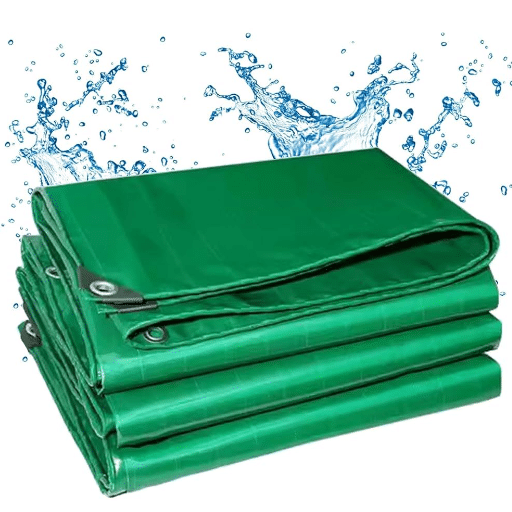
Material Composition and Weight
When considering the selection of a thick tarp, the material composition and weight are pivotal aspects to hold durability and functionality. The more robust tarps are usually those made out of polyethylene or vinyl, both of their resisting tendencies proficient at water, UV rays, and tearing. Usually, polyethylene types of tarps are quite lightweight, flexible, and cheap, which makes them great candidates for general use; on contrast, vinyl tarps are heavier and better suited for the difficult applications of industrial or construction environments. Tarps are usually classified in terms of their weight in grams per square meter (GSM): the heavier, the more durable, with those weighing above 200 GSM offering the maximum strength and longevity, especially in adverse weather conditions. Recent data reflected an upward trend toward searches for tarps with reinforced edges and multi-layered construction-a clear sign of consumer desire for products that weigh equally with durability. For a majority of practical applications, a synthesis of the material type and GSM rating will guide buyers toward their selections for tarps that can offer a suitable combination of durability and practically for the particular task at hand.
⚖️ Material Weight Classification
Weather Resistance and Durability
To point out the tarps with the best weather resistance and Durability, we shall take a look at the materials of construction and at consumer preferences, as identified by recent search trends. PE tarps with UV stabilization and high GSM rating have enjoyed a surge in etc, search over the recent past. These are important for uses where long exposure to sunlight is needed, thus fighting against the degradation of materials through sunlight. PVC tarps are then the most searched for industrial applications, thanks to their waterproofing and tear-resistant properties. The continued trend toward waterproof and breathable tarps, often made of canvas treated with water-resistant coating, caters to the consumer interest for weather versatility. Therefore, best tarps get decided by knowing why they are going to be used and putting those requirements against material specifications and performance features spotted by market data.
🌦️ Weather Resistance Features
UV Stabilization
Prevents material degradation from sunlight exposure
Waterproofing
Complete moisture barrier protection
Tear Resistance
Withstands physical stress and punctures
Temperature Tolerance
Performance in extreme hot and cold
Reinforcements for Strengthening
Reinforcements are an add-on strength for tarps to help make them more structurally sound and durable in high-stress applications. These days, according to the last search trend and technical knowledge, reinforced tarps, with double-stitched hems, nylon webbing, or grommet reinforces, are much in demand from both industrial use and consumer applications. These modifications in design lessen the possibilities of tearing or fraying when put under strain, thus making them fit for harsh environments such as construction sites, under operation conditions of agriculture, or extreme weather conditions. Also, multi-layered materials with cross-weaving patterns have a high tensile strength, allowing for greater flexibility. Knowledge of these types of reinforcements enables consumers to make an informed choice in regard to their load-bearing needs, thus ensuring the greatest longevity and reliability of the product.
🔧 Reinforcement Technologies
- Double-Stitched Hems: Extra strength at edges and seams
- Nylon Webbing: Enhanced load distribution
- Grommet Reinforcement: Stronger attachment points
- Cross-Weaving Patterns: Multi-directional strength
- Multi-Layered Construction: Increased overall durability
- Heat-Sealed Seams: Waterproof and tear-resistant joints
Frequently Asked Questions (FAQ)
What mil thickness may be considered for the thickest tarp?
The thickest tarps found on the market range in mil thickness, with, for example, 30 mils being very hard to resist. They can stand up to a lot of bad weather and heavy rain management, and as such are popular tarps for use on construction sites. A 20 mil tarp is heavy-duty and provides greater covering, while a 16 mil tarp is also popular for those who want durability and some flexibility. The thicker the tarp, the more tear-resistant and UV-resistant it is, which implies that, apart from having a rather short life, it will also be not suitable as a protective cover.
How does the material weight continue to describe the durability of a heavy-duty tarpaulin?
The material weight of a heavy duty tarp significantly contributes to its strength and durability. Heavier tarps—those of 12 mil or 20 mil RFID polyethylene or PVC—would generally be considered to resist better wear and tear. Because of this thickness, they can better withstand the extremes of weather conditions and prevent UV damage and heavy rains. Lightweight tarps, being higher handling, usually range somewhere between 5 and 6 mils and might not offer the protection asked for. Weight by ounces per square yard would be your best parameter in weighing good against bad for your choice of tarp.
What are the benefits of super heavy-duty tarp?
Super heavy-duty tarps enjoy some advantages over the normal ones, especially in terms of strength and durability. They are usually made from thicker materials such as 20 mil or 30 mil options, hence giving much greater protection from the elements. They suffice against tearing and have grommets every 24 inches for easy securing and fastening. Therefore, they would be well-suited to construction sites or wherever strong protective covers are needed. These tarps are very UV resistant, hence do not degenerate over time. Basically, they stand all hostile conditions and keep functioning till the end.
What options are available for custom size tarps?
There are several options of custom size tarps available from which you can choose according to specific needs. Most suppliers provide the ability to fabricate tarps from various mils, say 10 mils, 12 mils, or extra thick 20 mils, depending on your requirement. You may select the materials of heavy-duty poly or vinyl-laminated tarps with difference in durability and weather-resistance. One may also choose the color as one of the customizing options, such as black vinyl tarps or white poly tarps, and the dimensions to fit exactly on the project. This thus gives freedom to come up with a solution that fits one well in protective cover needs.
What should one consider when buying a heavy duty tarp?
Several aspects should be weighed in while buying a heavy duty tarp. The first aspect is considered to be the thickness of the tarp, usually mil thickness, where thicker ones of 16 mil or 20 mil offer a higher degree of protection. Secondly, you may want to consider the weight and whether or not your option should be waterproof or UV resistant. Grommets at 24 inch intervals may aid securing those tarps on occasions. One should also consider the intended use, for example, will it be for construction site usage, for outdoor events, or multipurpose protective cover? This will give a window into specific requirements for the particular tarps.

